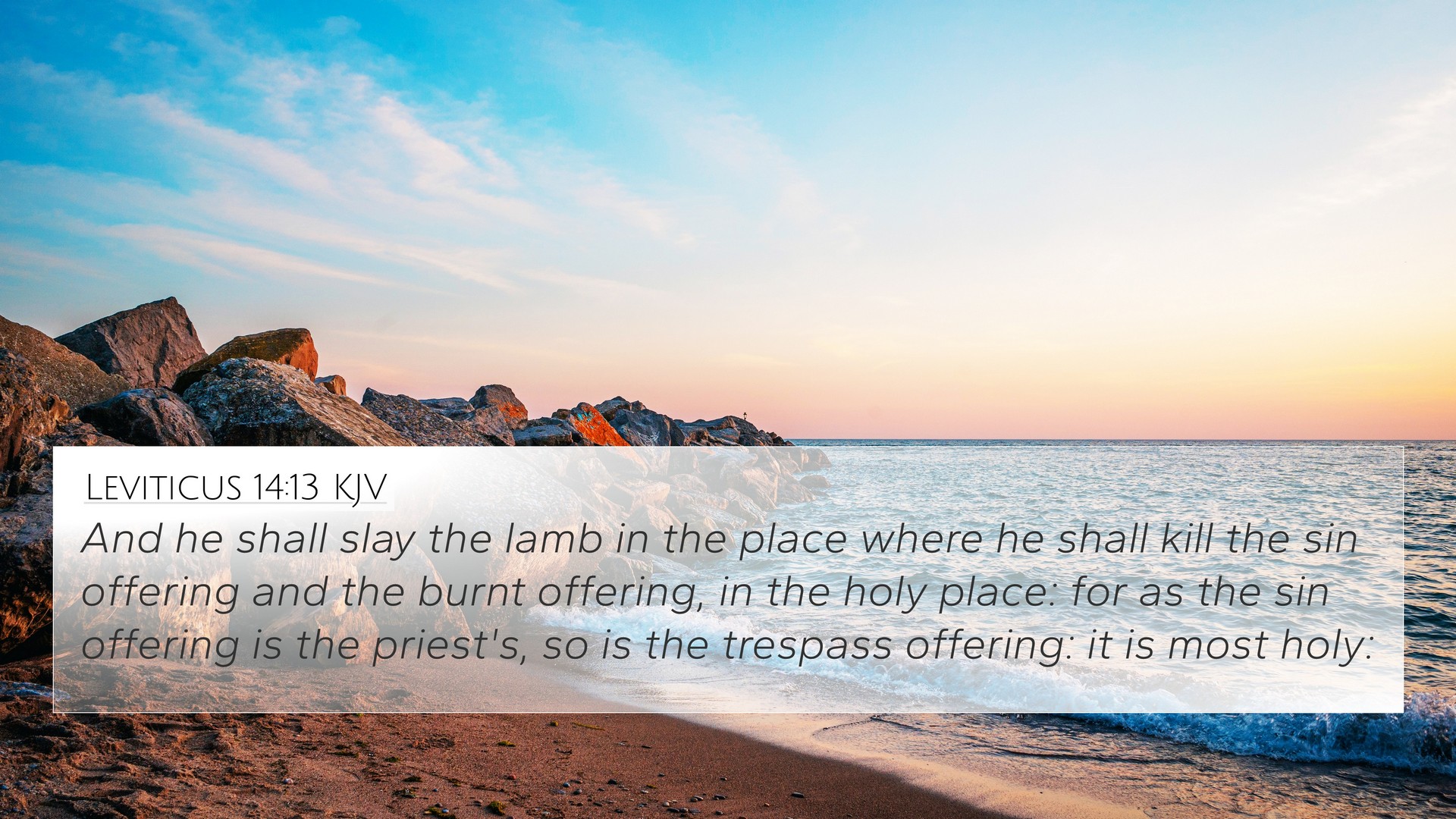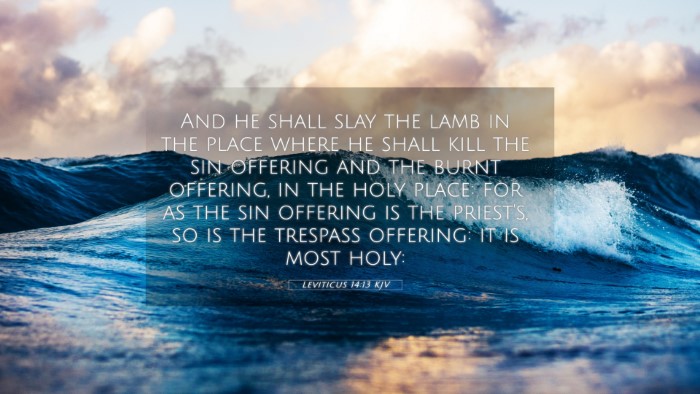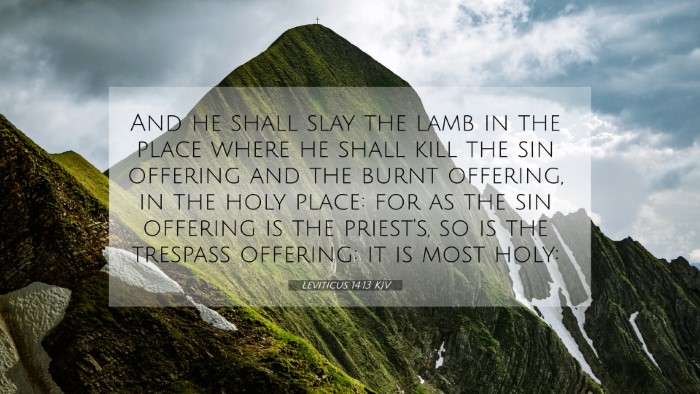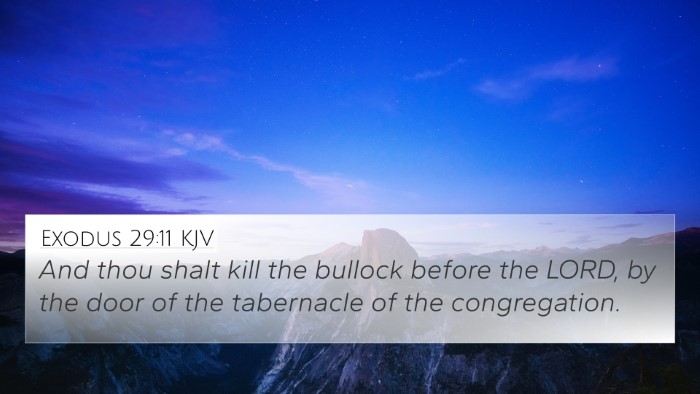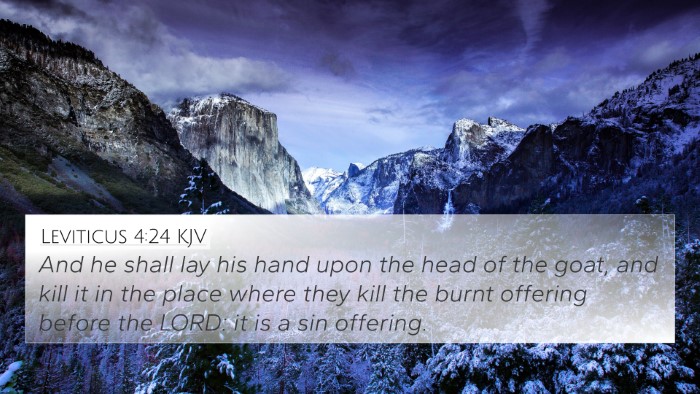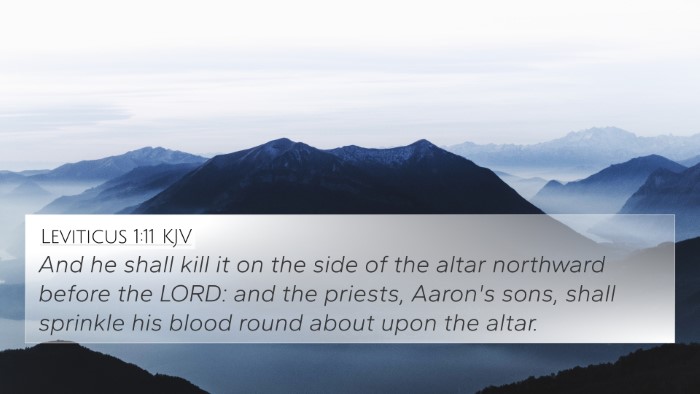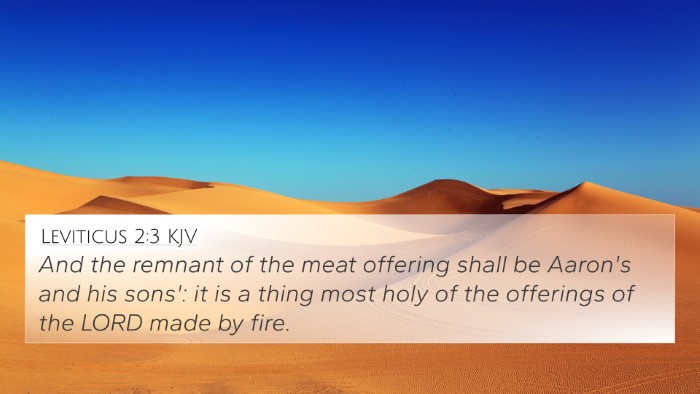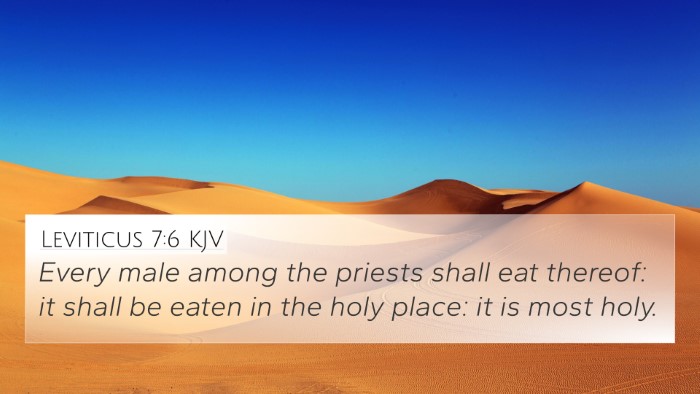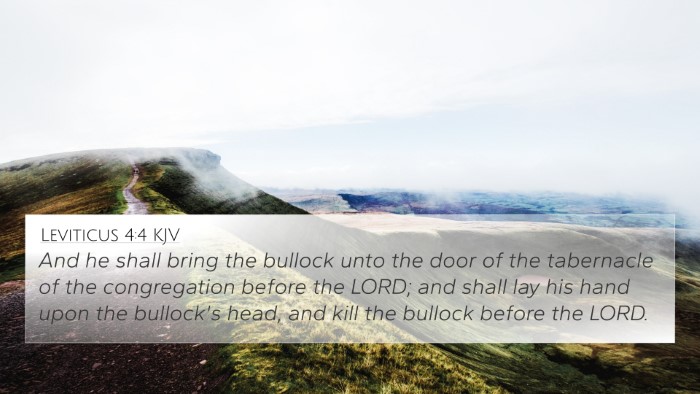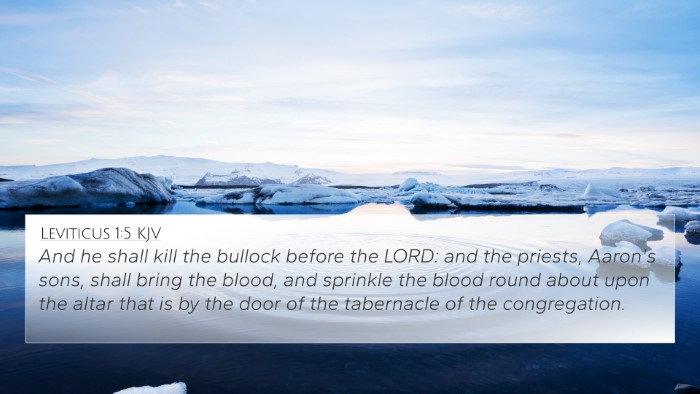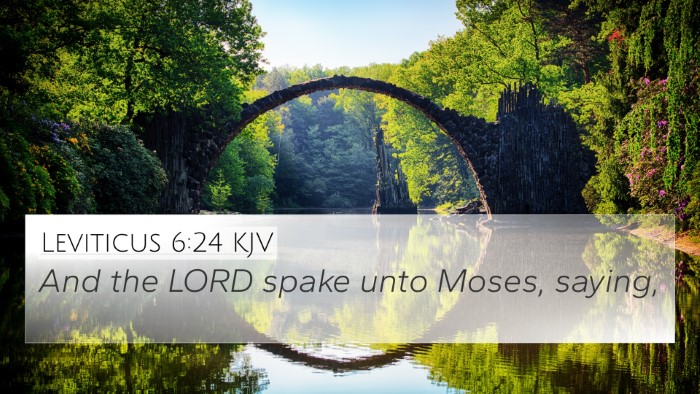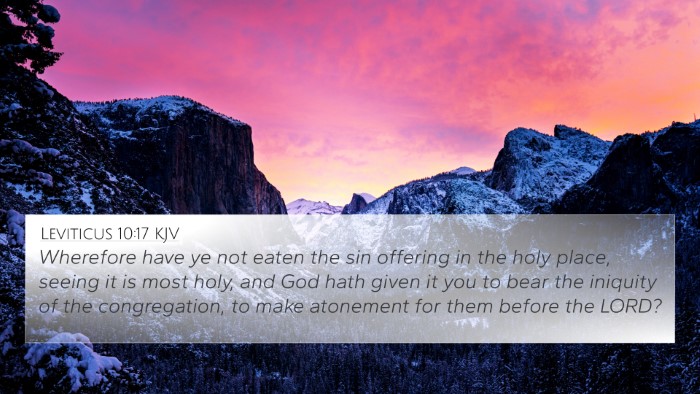Understanding Leviticus 14:13
Leviticus 14:13 reads:
"And he shall slay the lamb in the place where he shall kill the sin offering and the burnt offering, in the holy place: for the sin offering is for the priest, and the burnt offering is for the people."
This verse is part of the broader ceremonial laws pertaining to leprosy and its purification outlined in Leviticus. The act of sacrifice here is highly significant, reflecting back to the themes of atonement and the priestly duties.
Exegesis and Insights from Commentaries
-
Matthew Henry:
Henry emphasizes the seriousness of sin and the necessity of atonement. The slaying of the lamb symbolizes the greater sacrifice that Christ represents, fulfilling the need for sacrifice in the ultimate atonement.
-
Albert Barnes:
Barnes highlights the ritual importance of the location of sacrifice; it must occur in a holy place to demonstrate reverence for God and His laws. He notes this act underlines the priestly office and the relationship between the priest and the community in the redemptive process.
-
Adam Clarke:
Clarke discusses the intricate requirements of the sacrifices as they pertain to the priesthood and worship. He mentions that the sin offering and burnt offering serve different purposes: the first is for atonement while the latter signifies dedication and gratitude to God.
Thematic Connections
This verse holds several important connections within the larger narrative of the Bible:
- Hebrews 9:22: "And almost all things are by the law purged with blood; and without shedding of blood is no remission." - This connects the necessity of bloodshed for atonement.
- 1 Peter 1:19: "But with the precious blood of Christ, as of a lamb without blemish and without spot:" - Relating the lamb sacrifice to Christ.
- Isaiah 53:7: "He was oppressed, and he was afflicted, yet he opened not his mouth: he is brought as a lamb to the slaughter..." - A prophetic connection to the sacrificial system.
- Matthew 26:28: "For this is my blood of the new testament, which is shed for many for the remission of sins." - Christ identifies Himself as the ultimate sacrifice.
- Romans 5:8: "But God commendeth his love toward us, in that, while we were yet sinners, Christ died for us." - Acknowledgement of sacrifice for redemption.
- Leviticus 4:35: "And he shall take away all the fat thereof, as the fat of the lamb is taken away from the sacrifice of peace offerings..." - Details the atoning aspects of offerings.
- John 1:29: "The next day John seeth Jesus coming unto him, and saith, Behold the Lamb of God, which taketh away the sin of the world!" - Jesus as the Lamb fulfills the roles of the sacrificial system.
Significance in the Context of Biblical Sacrifice
The act of slaying the lamb in the context of Leviticus 14:13 illustrates the seriousness of sin and the provision for purification. The connection to holiness highlights God’s requirement for spotless offerings and the necessity of the priest as an intermediary.
Cross-Referencing and Biblical Studies
To fully grasp the significance of Leviticus 14:13, one can utilize various Bible verse cross-references and tools for a deeper understanding:
-
Bible Concordance: Helps locate all mentions of lambs and sacrifices throughout Scripture, providing a broad context for understanding the symbolism in Leviticus.
-
Bible Cross-reference Guide: A structured approach to study connections between the Old Testament sacrificial laws and their New Testament fulfillments.
-
Cross-reference Bible Study: Engaging with various scripture before and after Leviticus to see how these laws play out in God's redemptive plan.
-
Comprehensive Bible Cross-reference Materials: Collecting texts across both testaments can reveal deeper theological truths regarding sin and redemption.
Conclusion
Leviticus 14:13 not only instructs on the specifics of sacrificial offerings but also embeds rich theological themes that resonate throughout the Bible. Through scriptural cross-referencing, we can identify the overarching narrative of redemption that culminates in Christ, the Lamb of God. Understanding these connections enhances one’s study and appreciation of Scripture.
